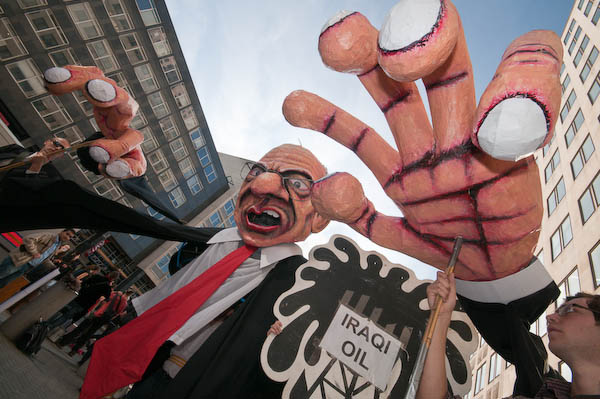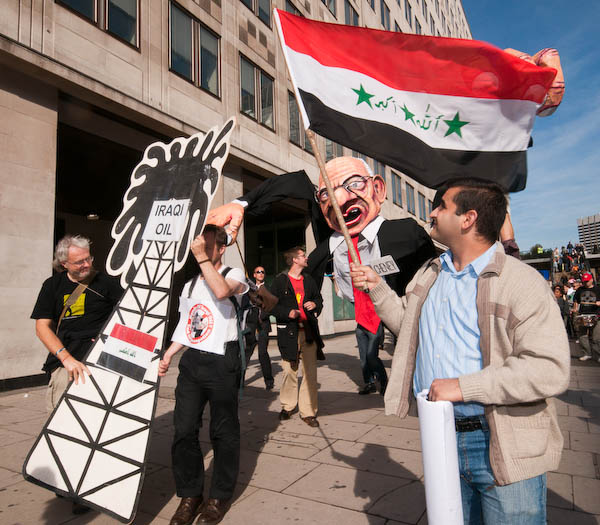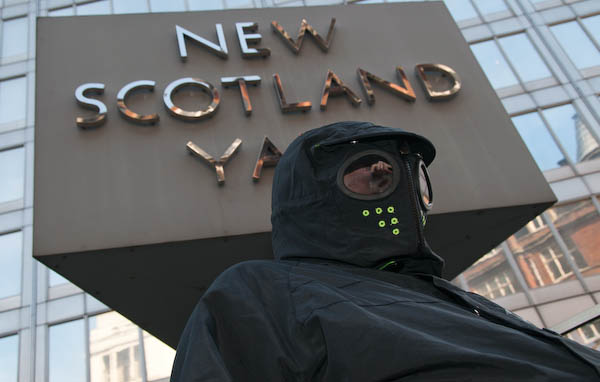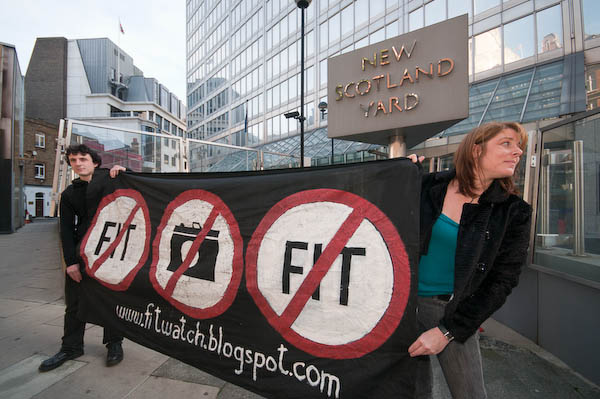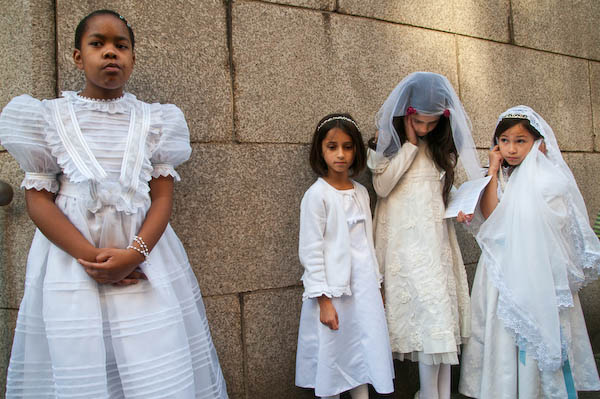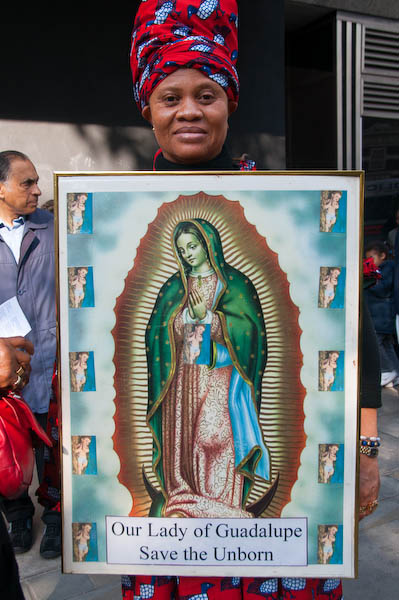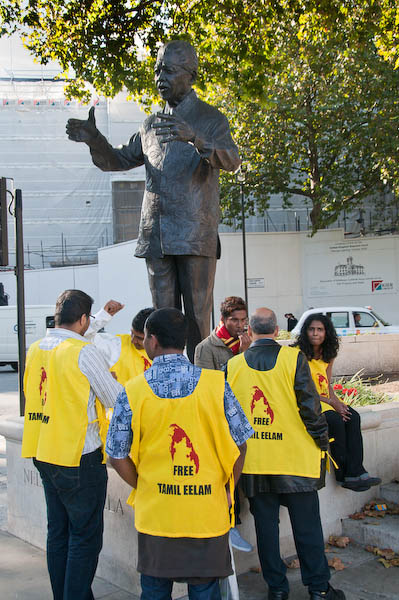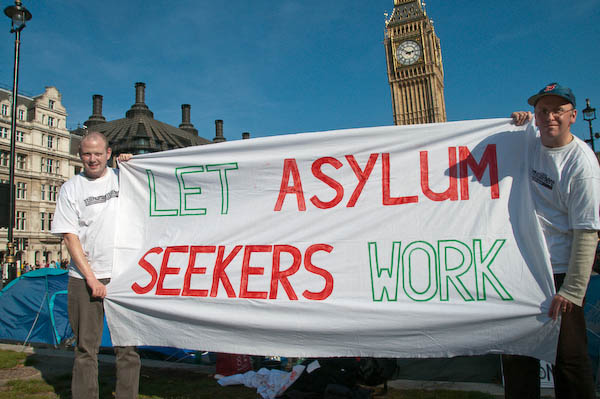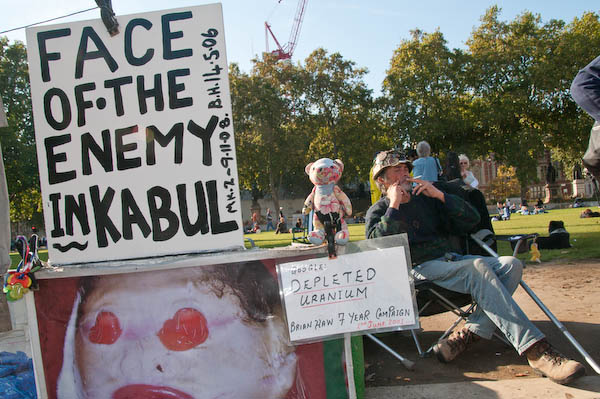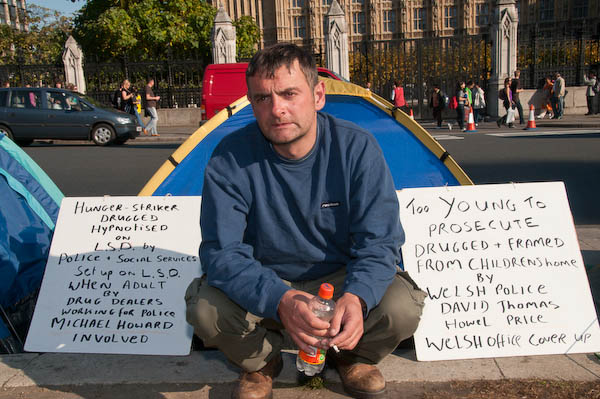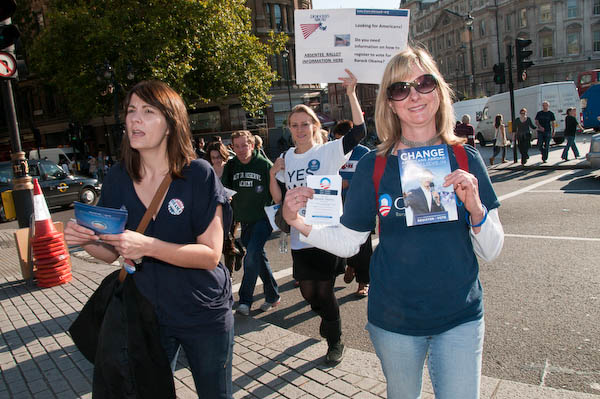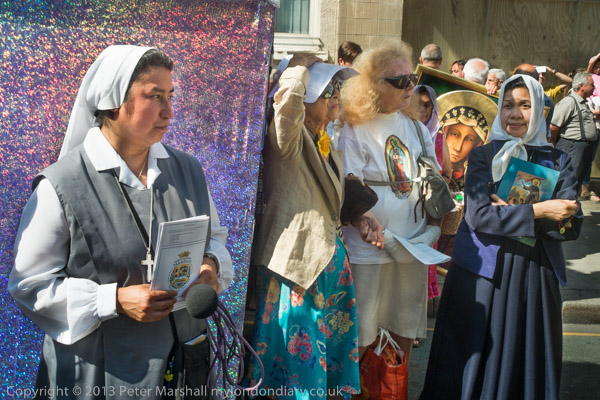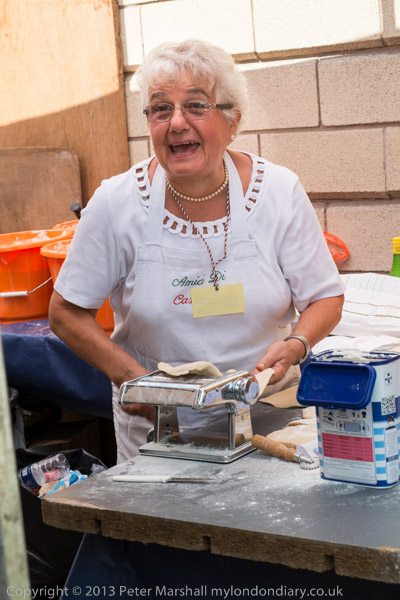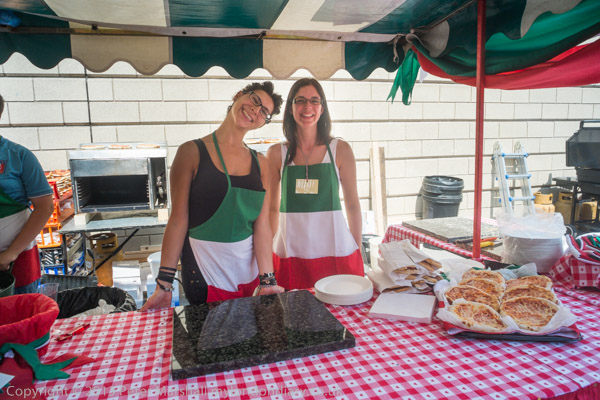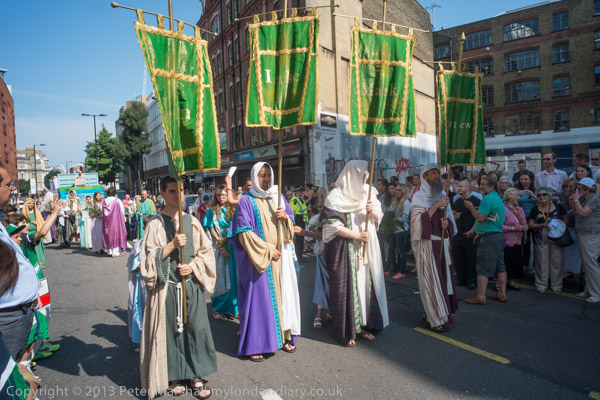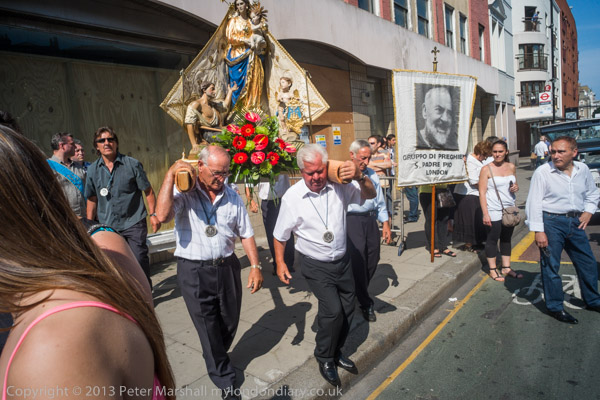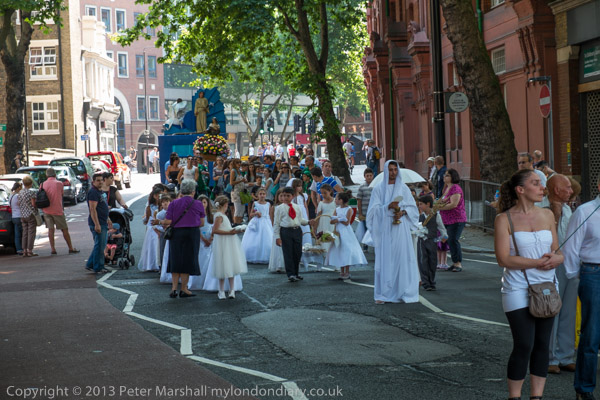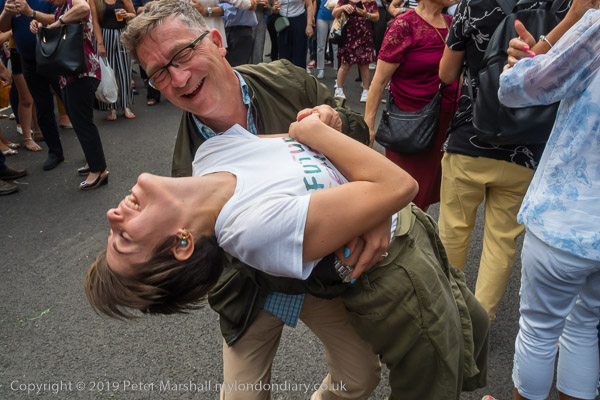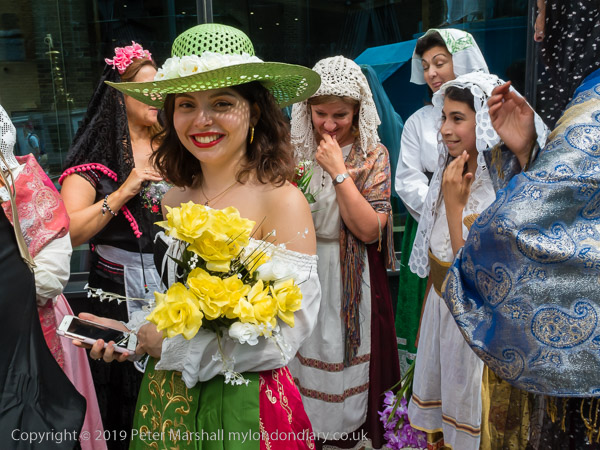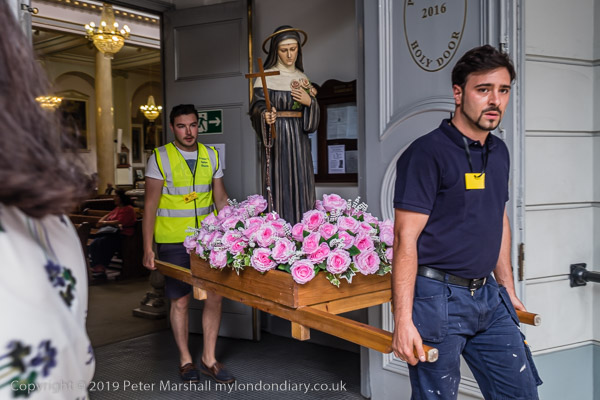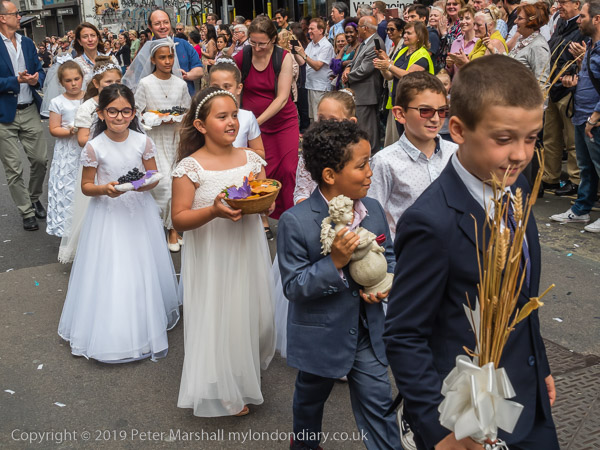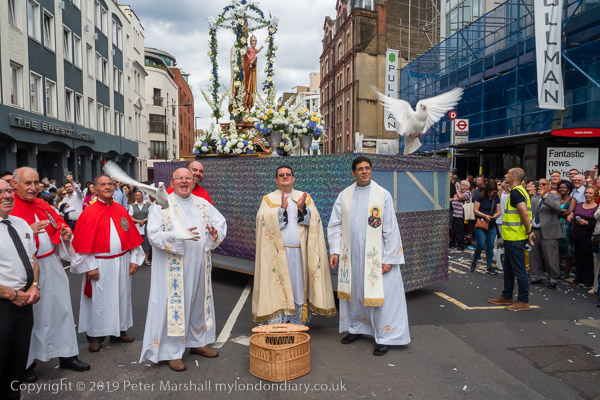Costa, A Corner & Our Lady of Sorrows continues my walks in Peckham in March 1989. The previous post was A Laundry, Crescent, Shops, Mission & Settlement.
G Costa, importers and distributors of fine foods was founded in 1879 and incorporated in 1913. The company moved out of Peckham to another of its sites in Aylesford Kent in 1994, and was bought by Associated British Foods in 2003.
Among its products is the Blue Dragon range of sauces and ingredients for Chinese, Japanese and S E Asian meals. The factory site has since been developed as housing.
Although this building has been replaced by a new block, these is still a slight bend here at the south end of Staffordshire Street just before it ends on Peckham High St. There are still some posts along the side of the pavement, but no longer needed to protect pedestrians from lorries from the factory, but three hoops to lock a bike to outside the entrance to Gaumont House.
This block was the site of the first Gaumont Palace Theatre to be built in London in 1932, on the site of the 1898 Peckham Hippodrome Theatre on Peckham High St between Marmont Road and Staffordshire Street. Later it became simply The Gaumont and was damaged by bombing in 1941 and a V1 flying bomb in 1944, managing to re-open after both a few months later. Refurbished in 1948 it closed in 1961 and was converted into a Top Rank Bingo club with boxing matches once a week. It was sadly modernised in the 1970s, closed in 1998 and was demolished in 2002.
I was attracted by the odd pattern of rectangles, including one one the pavement in the foreground and others along the wall, with those each side of the leaning lamp post formed by shadows rather than the actual doorways and subtly subverting the impression of space in the picture.
I took two pictures on this street corner, the first on an impulse when a man walked in front of me as I was getting ready to take a picture, his shadow falling on the tiles of the doorway.
But this is the picture I had stopped to take, and rather more carefully composed. If you look carefully from this corner now you can see that the five windows in my picture have all been bricked up, with just a small window left at the top of the lowest one. The block of flats further down Marmont Road is still there though now rather hidden by trees.
At right the curve with lights is above the tiled entrance to the foyer of the Top Rank Bingo Club, built in1932 as the Gaumont Palace Theatre, though later modernised. The large foyer extended out into the street corner in a single storey curve from the massive brick block of the cinema.
There is still a curved corner at the right, but to a newer and rather anonymous building on the site, Gaumont House.
This terrace of splendid double-fronted Victorian houses, continued at the left by some slightly less grand without a first floor window over the central door is still there on Friary Road.
The road was developed in the 1840s as Lower Park Road, when Peckham Park, also known as Peckham New Town was a very desirable middle class suburb. Like many other London roads it was renamed in the 1930s and became Friary Road, named for the Friary on the corner of this road and Bird in Bush Road.
For some reason the church here is listed as the Church of Our Lady of Seven Dolours on the Old Kent Road, Southwark, London, SE15, a quarter of a mile away, although the listing does include the correct address of Bird in Bush Road where my picture was taken showing the side of the Grade II listed church.
This very large church was designed by the prominent Victorian church architect E W Pugin and built from 1859 to 1866, delayed by lack of funds, for the Capuchin Friars. They built a Friary next door (designed by James O’Byrne) on what is now Friary Road in the 1884s and served the church there until 2000 when the Friary buildings were handed to the archdiocese and are now home to a Vincentian community.
These are the 1884 buildings for the Capuchin Friars from where they served the church and community until 2000.
More on this walk in March 1989 to follow. The first post about this walk was Shops, Removals, Housing and the Pioneer Health Centre.







